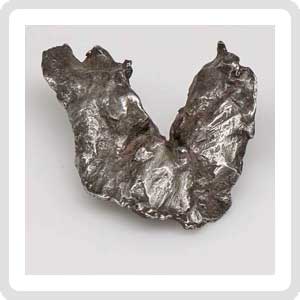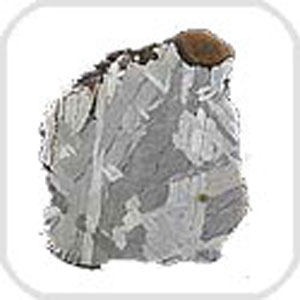Iron Meteorite
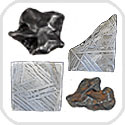
Our collection of iron meteorite for sale is presented below. Iron Meteorites, the remnants of the core of ancient asteroids, are not only unusual, but they also offer valuable insights into the formation of our solar system. By acquiring an iron meteorite, you become the keeper of a piece of cosmic history dating back billions of years. Explore our selection and discover why these valuable celestial space irons are a worthy addition to your collection.
-
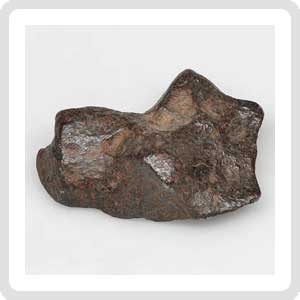
Agoudal Meteorite (Imilchil)6 Item(s)
-
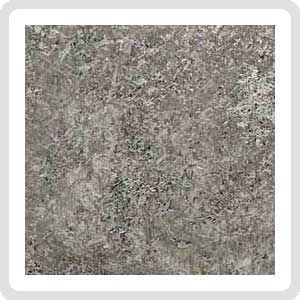
Balambala Iron Meteorite8 Item(s)
-
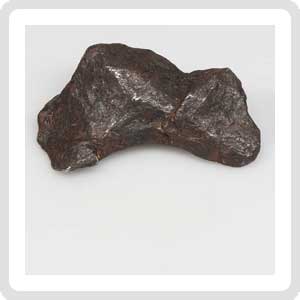
Canyon Diablo Iron Meteorite9 Item(s)
-
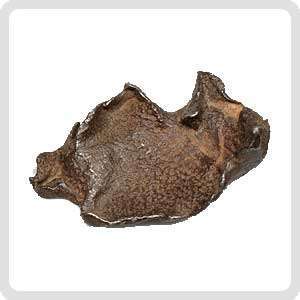
Gebel Kamil Iron Meteorite2 Item(s)
-
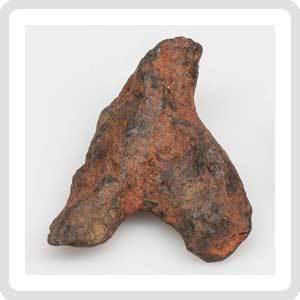
Henbury Meteorite15 Item(s)
-
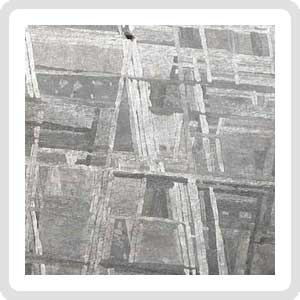
Muonionalusta Meteorite0 Item(s)
-
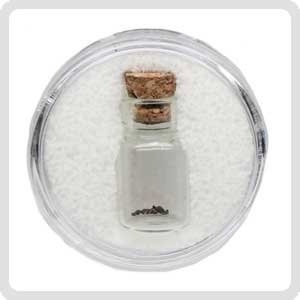
Nininger Spheroids1 Item(s)
-
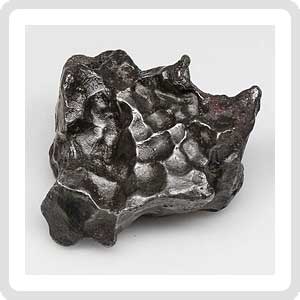
Sikhote-Alin Iron Meteorite18 Item(s)
-
Sikhote-Alin Meteorite Shrapnel6 Item(s)
-
Toluca Meteorite0 Item(s)
Fascinating Facts about Iron Meteorites
At The Meteorite Exchange, Inc., we aim to generate curious enthusiasm for the unknown through our vast array of iron meteorites for sale which hold vital information that can broaden our understanding of science. They’re primarily composed of two metals – iron and nickel. This unique composition, amongst other elements, inclusions, and silicate minerals, allows us to identify them enabling a science of meteorite identification.
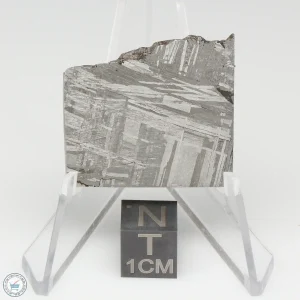
The structure formed by nickel-iron alloys in many meteorites is known as the Widmanstätten pattern. These fascinating patterns serve as authentic ‘fingerprints’ separating meteorites apart from any earthly object. For any amateur or professional reader interested, this is undoubtedly a unique source of research.
An iron meteorite isn’t just another piece of unhewn metal. Instead, it’s a unique piece of the puzzle we call our universe. They are fluent reminders of the history of our solar system while contributing to contemporary scientific research. Most importantly, each iron meteorite holds the key to an untold cosmic story, revealed through cutting-edge science.
Having an iron meteorite in one’s possession is like owning a precious piece of cosmic history. Every ridge, every depression, and every shiny metal glint tells tales of the solar system they once wandered. It’s an enlightening journey tracing the origins of these iron-rich fragments, and it doesn’t end there. There’s an incredible amount of information available, both online and offline, that explores the mysteries of meteorites and the science that identifies them. For example, the transition from a non-descript piece of metal to a recognized meteorite is a journey of scientific exploration in itself.
So, whether you’re an amateur collector or a seasoned researcher, start your quest for an iron space rock with us. We at The Meteorite Exchange, Inc. offer a variety of iron meteorites that span wide size and composition ranges. Each iron specimen we display for sale is hand-selected – ensuring that only the best specimens find their way into your collections. Enliven your scientific curiosity with our iron meteorites, and delve deep into the mysteries of the cosmos that will forever redefine your perception of the term ‘rock’.
Catalog Specimens
| Meteorite Name | Country Found | Year Found | Brief Description |
|---|---|---|---|
| Agoudal | Morocco | 2000 | Agoudal was found found in Morocco and is classified at a hexahedrite. |
| Balambala | Kenya | 2018 | Balambala is an iron meteorite discovered in Kenya. Balambala was found as a single mass of 60.5 kilograms. |
| Canyon Diablo | USA | 1891 | Canyon Diablo is one of the most famous meteorites. It was discovered in Arizona and is associated with the impact crater known as Meteor Crater. It’s an octahedrite iron meteorite. |
| Gebel Kamil | Egypt | 2009 | Gebel Kamil is an iron meteorite found in Egypt, near the border with Sudan. It is known for its relatively recent fall and the well-preserved nature of its fragments. |
| Henbury | Australia | 1931 | Henbury is a group of iron meteorites found in the Northern Territory of Australia. The Henbury meteorites are believed to have fallen thousands of years ago. |
| Mundrabilla | Australia | 1911 | Mundrabilla was found in Western Australia. It is classified as an octahedrite and is notable for its size and distinctive Widmanstätten patterns. |
| Saint-Aubin | France | 1968 | Saint-Aubin is an iron meteorite discovered in France. The total amount of Saint Aubin recovered is now over 6 tons. |
| Sikhote-Alin | Russia | 1947 | Sikhote-Alin is a famous iron meteorite that fell in the Sikhote-Alin Mountains of Russia. It is known for its incredible fireball, sculptured individuals, and the shrapnel-like appearance of its fragments during the fall. |
Exploring the Asteroids: Origin of Iron Meteorites and Their Distinct Pattern
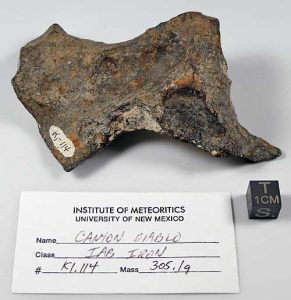
The exploration of asteroids provides us with significant insights into
the ingredients that make up the core of our planets and the remarkable iron meteorites they frequently yield. Iron meteorites exhibit a unique composition primarily of iron and nickel. These iron-nickel metal meteorites distinctively originate from asteroids – floating fragments that are remnants from the initial formation of the solar system. The asteroids hold a striking resemblance to planet cores, which provides an explanation for the preponderance of elements found in these meteorites.
Iron meteorites, many of which can be found on The Meteorite Exchange, Inc., are an aftermath of the violent collisions that took place between asteroids in the early phases of the universe. When these asteroids collided, it resulted in smaller fragments that ventured into space, heading towards our planet over time. Space exploration provides us with a deeper understanding of these meteorites and serves to affirm the information we already know.
Asteroids, with their iron composition, have a significant role in the development of meteorites. Indeed, part of what makes them so intriguing is the distinctive pattern they often display, which attests to their origin from the iron cores of asteroids. As asteroids cool and solidify over billions of years, large crystals of iron-nickel metal begin to form, creating what is collectively known as a Widmanstätten pattern as shown in etched slices. This pattern is not replicable in Earth’s faster cooling environment, thereby establishing meteorites as a unique phenomenon.
Stony-iron meteorites, for example, exhibit this pattern in a particularly compelling way. Their dualistic nature, consisting of both metal and silicate, is due to the slow cooling rate of the asteroid body from which they were expelled. The slow rate enables the formation of the pattern, while the sikhote-alin iron, another highly sought-after meteorite, is known for its regmaglypts or thumbprint-like impressions. This feature is a product of the intense heat and pressure endured during the meteorite’s penetrating descent through Earth’s atmosphere.
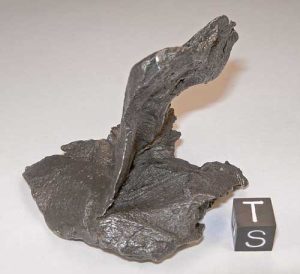
The cosmic history embedded in meteorites makes every discovery an occasion of scientific significance. The Meteorite Exchange, Inc. offers a collection of these amazing fragments from asteroids, allowing enthusiasts and researchers alike to hold a piece of space in their hands. Whether you’re fascinated by the unique composition of the pallasite meteorite, captivated by the texture of sikhote-alin iron, or simply allured by the beauty of a meteorite’s pattern, you’re guaranteed to find a stellar specimen amidst our online collection.
From Planets to Earth: How Iron Meteorites, Renowned for Their Unique Pattern, Become a Meteorite
Scientifically speaking, meteorites are fascinating cosmic pieces that make a grand journey from other celestial bodies, and then plunge through the earth’s atmosphere to reach our planet. Comprised of various unique elements, iron meteorites are particularly stunning. They begin their life as part of a planetary core or a large asteroid in the vast cosmos. Over billions of years, numerous cosmic events cause them to break off from their parent body and set them on a trajectory, some of which lead them towards our earth.
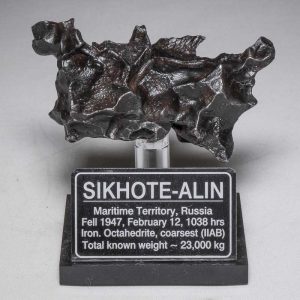
Given the sheer velocity of these meteorites, they enter our atmosphere at exceptionally high speeds. Due to this, some of the outer material gets superheated and partially melted, forming a fusion crust on the meteorite. The extreme forces and heat generated as a meteorite pierces the atmosphere, can lead to breakages, resulting in smaller meteorite pieces landing on the earth. Despite the brutal atmospheric entry, the core composition of these meteorites remains intact, reflecting the core composition of their parent celestial bodies.
The most commonly found meteorites are stony meteorites, but iron meteorites have their own unique fascination. According to NASA’s cosmic data studies, iron meteorites are fragments from the cores of larger ancient asteroids that have been shattered upon colliding with other bodies. Despite the fact that iron meteorites make up just 5% of meteorite falls, they are renowned for their unique pattern. This is attributed to the slow cooling of molten iron-nickel alloys, which leads to the formation of inter-grown metallic crystals visible in their cross-section.
The stranger the journey, the more notable the piece becomes in the world of meteorites. Iron meteorites can take millions to billions of years to travel from their parent body to the earth. The long, arduous journey, coupled with the unique pattern they bear, make them highly prized by institutes like NASA, meteorite collectors, and dealers like The Meteorite Exchange, Inc. Our earth offers a natural cosmic museum, and every meteorite we discover adds another piece to the mosaic of our understanding of the universe.
We hope you found this overview insightful. The next time you witness a shooting star, remember that it’s a cosmic traveler, potentially traveling from one end of the universe to another, battling intense forces to reach the earth’s surface. And who knows? The very next meteorite could be on its way to earth right now and it just might have your name on it.
Pallasite Meteorites
Stony-Iron meteorites are thought to originate from the boundary between the metallic core and rocky mantle of differentiated asteroids, where these two materials mixed together during a collision. The presence of both metallic and rocky components in these meteorites provides valuable insights into the processes that occurred during the early formation of our solar system.
There are several subtypes of Stony-Iron meteorites based on the relative proportions of rocky and metallic material. These include pallasites, which have a high proportion of olivine crystals embedded in a metallic matrix, and mesosiderites, which have a mixture of metallic and rocky fragments.
We have a separate catalog page for pallasites and mesosiderites, so please click to button below to see our available Pallasite Meteorites.
Frequently Asked Questions
Q: What is The Meteorite Exchange, Inc.?
A: The Meteorite Exchange, Inc. is an online marketplace that specializes in providing various types of meteorites. The Meteorite Exchange, Inc Team has decades of experience.
Q: What makes iron meteorites special?
A: Iron meteorites are remnants of the core of ancient asteroids and serve as a unique piece of the universe. They hold valuable insights into the formation of our solar system and contribute to contemporary scientific research. They are mainly composed of iron and nickel and often display a unique pattern known as the widmanstätten pattern.
Q: What is the Widmanstätten pattern?
A: The Widmanstätten pattern is the structure formed by nickel-iron alloys in many meteorites. These fascinating patterns seen in a meteorite slice serve as authentic ‘fingerprints’ setting meteorites apart from any earthly object and are crucial to the science of meteorite identification.
Q: How can I own an iron meteorite?
A: You can start your quest for an iron meteorite with us at The Meteorite Exchange, Inc. We offer a variety of iron meteorites that span wide size, composition, and shape ranges, ensuring a nice variety of specimens are available for your collections.
Q: What do iron meteorites reveal about our solar system?
A: Iron meteorites are an aftermath of the violent collisions that took place between asteroids in the early phases of the universe. They allow us to learn about the ingredients that make up the core of our planets and are a testament to the origins of the solar system. Study of these meteorites provides us with a deeper understanding of asteroids and facilitates scientific exploration.

